Results 5,191 to 5,200 of 12095
Thread: Anandtech News
-
07-23-15, 07:00 PM #5191
Anandtech: NVIDIA Launches Summer GeForce Game Bundle - Metal Gear Solid V: The Phant
As the month of July begins to wind down, so does NVIDIA’s existing Two Times the Adventure Game Bundle. With Batman: Arkham Knight having been something of a technical flop on the PC, no doubt NVIDIA is happy to finally move on to something more enticing for buyers, as the company is announcing that they have once again refreshed their game bundle promotion for GeForce products.
Launching today is a new bundle for the summer, which NVIDIA is calling the “Game Like A Boss” bundle, and is built around the forthcoming Metal Gear Solid V: The Phantom Pain. The Phantom Pain is the latest in the long, long line of Metal Gear games, and the follow-up to last year’s Metal Gear Solid V prologue game, Ground Zeroes. Meanwhile, although an NVIDIA bundle game, The Phantom Pain is not a GameWorks game and won’t feature any of NVIDIA’s effects libraries, though the company is quick to note that it will work with SLI, DSR, and the company’s other baseline features.
Like the previous Two Times bundle, the Phantom Pain bundle is for the bulk of NVIDIA’s 900 series desktop lineup, and once again covers some of NVIDIA’s mobile parts as well. The GTX 960, GTX 970, GTX 980, and GTX 980 Ti are included in the bundle on the desktop, and on the mobile side the GTX 980M and GTX 970M are included as well. Meanwhile the GTX Titan X will remain absent, as NVIDIA more often than not NVIDIA excludes them from bundles, as is the case here.
Finally, as always, these bundles are being distributed in voucher from, with retailers and etailers providing vouchers with qualifying purchases. So buyers will want to double check whether their purchase includes a voucher for either of the above deals. Checking NVIDIA’s terms and conditions, the program is valid in all regions except China, with the program scheduled to run through September 1st (or while supplies last). As for The Phantom Pain itself, the game is being distributed through Steam and is currently scheduled for release on September 15th.NVIDIA Current Game Bundles Video Card Bundle GeForce GTX Titan X None GeForce GTX 980 Ti Metal Gear Solid V: The Phantom Pain GeForce GTX 980/970 Metal Gear Solid V: The Phantom Pain GeForce GTX 960 Metal Gear Solid V: The Phantom Pain GeForce GTX 750/750Ti None GeForce GTX 980M/970M Metal Gear Solid V: The Phantom Pain GeForce GTX 965M/800M Series None
More...
-
07-24-15, 08:33 AM #5192
Anandtech: The MSI Z97A Gaming 6 Motherboard Review
Choosing a motherboard is not as easy as it sounds. Most people rely on price, brand experience, perhaps specific features and online reviews to help decide what fits best. While the Intel 9-series (Z97) platform has had a rough ride, motherboard companies always see the need to refresh to new designs periodically. As a result we get devices such as this, the MSI Z97A Gaming 6, to review.
More...
-
07-27-15, 07:44 AM #5193
Anandtech: The Huawei P8 Lite Review
Although many consumers are not familiar with Huawei, they are a company that I have seen selling smartphones for quite some time now. In the earliest days of the smaller Canadian carriers Huawei was one of the few companies that had smartphones available on their networks due to their use of the AWS band for HSPA which was uncommon in other devices here at the time. While Huawei has always had one or two flagship devices and makes some phablets, to me their core market was always mid range devices. Often these mid range devices are a downsized version of their flagship devices, and the smartphone being reviewed today is no exception. It's the Huawei P8 Lite, and it's the little brother of the Huawei P8. Read on for the full review of Huawei's latest mid range smartphone.
More...
-
07-27-15, 07:44 AM #5194
Anandtech: Lime Technology's unRAID 6 Brings Containers and Virtualization to NAS Uni
Consumers looking for network-attached storage have plenty of options. Most businesses go for a commercial off-the-shelf (COTS) unit, while enthusiasts and home users can go for either COTS or do-it-yourself (DIY) units. There are plenty of excellent COTS NAS vendors in the market, including, but not restricted to Asustor, QNAP, Seagate, Synology and Western Digital. QNAP and Synology have been at the forefront of bringing new features to COTS NAS units. On the DIY front, consumers can go for a dedicated NAS build or re-purpose an existing PC.
Some of the popular operating system options for DIY NAS units include Windows and its server variants, NAS4Free, FreeNAS, Rockstor etc. While NAS4Free, FreeNAS and Rockstor are free open source solutions, Windows and its server variants are paid options. Lime Technology's unRAID is a Linux-based embedded NAS OS that belongs to the latter category.
The following trends have been observed in the evolution of NAS operating systems over the last couple of years:
- An attempt to move from the traditional EXT3 / EXT4 to the more robust and modern ZFS and btrfs file-systems
- Movement of enterprise features such as high availability down the product stack
- Extensive focus on SDKs for enabling third-party applications / mobile-OS-like app stores
- Extending core functionality via features such as virtualization (NAS acting as a host for virtual machines) etc.
In the COTS space, QNAP's QTS brought about virtualization support more than a year back. Synology's high availability feature has been around in their business-class units for some time now. In addition, Synology's DSM 5.2 as well as QNAP's QTS 4.2 beta brought about Docker support. Recently, Lime Technology issued a press release to highlight the release of their unRAID Server OS 6.0 and proclaimed it to be the first non-beta NAS OS with support for both virtualization and containers (Docker). Where does unRAID stand in the current ecosystem of NAS units? Is it a good choice for your particular use-case? Read on for our analysis of the press release.
How does unRAID Work?
Traditional RAID systems use RAID 0, RAID 1, RAID 5, RAID 6 or some combination thereof. These RAID levels stripe data over multiple disks and, for non-RAID 0 or RAID 1 systems, also distribute parity blocks across the member disks. unRAID is not like these traditional RAID systems. The closest it can be compared to is RAID 4, a system in which data is striped across member disks and parity is always written to a dedicated parity disk. In the case of unRAID, the data is never striped. A given file is written to only one of the member disks. A dedicated parity disk enables recovery in case of a single disk failure. In addition, the disks can be of different sizes, as long as the parity disks is the largest of the lot.
unRAID 6 is a lightweight system in the sense that it can be booted off even a 512 MB flash drive on any x86_64 system. Usage as a NAS only requires 1 GB of RAM, and the whole system is loaded into and run off the RAM. Earlier versions of unRAID used ReiserFS, but unRAID 6.0 uses XFS by default. The use of a dedicated parity disk has a couple of drawbacks - the stress on the parity disk is comparatively higher when compared to traditional RAID systems, and the performance is bottlenecked by the performance of the parity disk. In addition, with UnRAID's policy of not striping data across the member disks, the performance is often what one disk can provide. To alleviate these shortcomings, unRAID provides the option of cache pools.
Cache pools can be made up of multiple disks protected using a traditional RAID-1 configuration. Unlike the main pool formatted in XFS, the cache pools are formatted in btrfs. unRAID 6.0 comes in three falvors - Basic ($59), Plus ($89) and Pro ($129). They differ only in the number of supported devices, as shown in the table below.
NAS Units as VM Hosts
We have already covered the usage of COTS NAS units as hosts for virtual machines using QNAP's QTS. unRAID 6 uses the same KVM / QEMU combination. Like QTS, unRAID also requires Intel VT-x / AMD-V support for running virtual machines.
In addition, unRAID 6 also supports pass-through of PCIe devices such as GPUs. To give an example, it is possible to run Windows as a guest OS on unRAID 6 and also have it take advantage of discrete GPUs in the PCIe slot. This feature is in the works for QNAP's QTS, but unRAID seems to be the first to bring it to a stable release. It is important to note that PCI device pass-through requires IOMMU (VT-d / AMD-Vi) support.
Docker - Containers for Lightweight Virtualization
Over the last couple of years, OS-level virtualization has taken off, with Docker leading the way. It enables applications to be deployed inside software containers. Portable applications made using VMWare's ThinApp or Microsoft App-V are very popular in Windows - one can think of Docker as enabling similar functionality on Linux. Arguably, Linux is much more fragmented (with respect to the number of distros) compared to Windows. Docker enables seamless deployment of one application build on a variety of Linux distros / versions. Each application has its own isolated environment, preventing the creation of software compatibility / co-existence conflicts with others.
It must be noted that container technology is not an alternative for full-blown virtualization. To be more specific, the KVM/QEMU combination allows users to run even Windows on top of a Linux OS. On the other hand, Docker allows only apps written for any Linux distro / version to run on a particular machine. Obviously, the hardware requirements and stress on the host machine are comparatively lower for Docker compared to KVM/QEMU.
The benefits of Docker in the server space are not touched upon - unRAID's Docker feature is meant for use in a home environment.
Concluding Remarks
The nature of unRAID's approach to data protection severely restricts the target market for the OS, unlike, say, the approach of FreeNAS, NAS4Free or Rockstor. Realizing this, Lime Technology has gone to great lengths to ensure that UnRAID 6 targets power users and enthusiasts with media serving / storage needs. The presence of both Docker and full-blown virtualization with PCIe device pass-through enables it to target users with gaming PCs that need to double up as media storage servers.
unRAID has been having a loyal following (I have been following them on AVSForum since 2009). The new features in unRAID 6.0 will serve to bring in more people into the fold. unRAID's approach does have some advantages for media serving scenarios:
- Avoiding striping ensures that it is trivial to take out a disk, mount it on another Linux system and copy off its contents. To drive home the advantage of this aspect - in case of simultaneous failure of two or more disks, it is possible to recover at least some data from the array by mounting the remaining good disks on another PC. (In the case of a RAID-5 array, the whole data is toast).
- Avoiding striping ensures that only the relevant disk needs to be spun up to read or write data. This may result in substantial power savings for multi-bay units where the power consumption of the member disks far outweighs the consumption of the system components.
However, there is plenty of scope for improvement - particularly since many users tend to have a single NAS for storing both media as well as other data:
- Improvement in data transfer rates across all types of accesses
- Automatic / continuous protection against bit-rot (available for the btrfs cache pool, but not the main XFS volume)
- Increasing disk sizes (and URE ratings remaining the same) make it a risky proposition to run multi-bay storage servers that can withstand only the failure of one disk.
- Compared to solutions like FreeNAS, NAS4Free and Rockstor, unRAID is closed-source and carries a licensing fee (ranging from $59 for the Basic version to $129 for the Pro).
We have provided a brief overview of unRAID and what v6.0 brings to the table. More information can be gleaned from Lime Technology's FAQs. If you are an unRAID user, feel free to chime in with more information / opinions in the comments section.
More...
-
07-27-15, 11:31 PM #5195
Anandtech: OnePlus Announces the OnePlus 2: 389 USD High-End Flagship
OnePlus showed up on the scene last year with a “flagship killer”, the OnePlus One. For those that are unfamiliar with this device, it brought a Snapdragon 801 SoC, 5.5” 1080p display, and some generally impressive hardware at a 350USD price point for the 64GB variant. This made the OnePlus One a pretty incredible value, and to OnePlus’ credit the One remains one of the better choices in the midrange market due to its high-end specs. Today, OnePlus is launching the successor to their first device, which is called the OnePlus 2. To establish some of the basic specifications of this device I would refer to the spec table below.
As one can see, the display size and resolution is unchanged from the OnePlus One, but OnePlus is promising higher static contrast at 1500:1, relative to the ~1000:1 contrast of the One. This is likely due to the use of photoalignment technology, which seems to have become an industry standard within the past few months. The 1080p resolution is sufficient for a 5.5” smartphone, although an increase to 1440p would be noticeable I suspect that OnePlus is responding to demands for improved battery life over higher display resolutions. The OnePlus 2 also has the somewhat standard Snapdragon 810 for a high-end smartphone, although it’s notable that the maximum frequency of the A57 cluster has been capped to 1.8 GHz in order to improve thermal performance. It isn’t clear if OnePlus is also using hotplug or other mechanisms to only use two big CPU cores either, but this will take a review to really figure out what’s going on. Battery also receives a minor size increase from 3200 mAh to 3300 mAh, presumably at a 3.8V nominal voltage. The lack of microSD expansion likely comes from user experience concerns, as is the non-removable battery.OnePlus One OnePlus 2 SoC Snapdragon 801 2.5 Ghz Krait Snapdragon 810 1.8 GHz A57/A53 RAM 3GB LPDDR3 3/4GB LPDDR4-1555 NAND 16/64GB NAND 16/64GB NAND Display 5.5” 1080p
IPS5.5” 1080p
IPSNetwork 2G / 3G / 4G LTE (Category 4 LTE) 2G / 3G / 4G LTE (Category 6/9 LTE) Dimensions 152.9 x 75.9 x 8.9mm, 162g 151.8 x 74.9 x 9.85mm, 175g Camera 13MP Rear Facing (Sony IMX214) f/2.0, 1.1 micron 1/3.06" sensor 13MP Rear Facing w/ OIS and laser AF, f/2.0, 1.3 micron 1/2.6" sensor 5MP Front Facing 5MP Front Facing Battery 3200 mAh (12.16 Whr) 3300 mAh (12.54 Whr) OS Android 4.4 w/ CM11S (At Launch) Android 5.1 w/ OxygenOS (At Launch) Connectivity 1x1 802.11a/b/g/n/ac +
BT 4.0 (WCN3680),
USB2.0, GPS/GNSS, NFC802.11a/b/g/n/ac +
BT 4.1,
USB-C, GPS/GNSSFingerprint Sensor N/A Touch SIM 1x MicroSIM DSDS NanoSIM LTE Bands Global: 1/3/4/7/17/38/40 US: 1/2/4/5/7/8/12/17
EU: 1/3/5/7/8/20
The other major change is the camera. It seems that OnePlus has elected to use a 13MP, 1.3 micron camera sensor with OIS integrated into the module and laser auto focus. The 13MP 1.3 micron sensor is likely to be the OV13860, which means that the sensor format is similar to both the LG G4 and Samsung Galaxy S6, but with a larger pixel size to improve low light performance to reduce read noise from the sensor. Optical stack details remain unknown but the aperture stays at f/2.0 to balance distortion and low light performance. OIS is also introduced to improve low light photo performance for longer exposures. Laser AF is also added to reduce AF speed, a weakness that was present in the OnePlus One. Given the look of this laser AF mechanism, I suspect this is ST-M's time of flight sensor which means that this sytem will be most effective within 10cm of the laser AF sensor.
OnePlus has also introduced some new features in the form of a notification switch, fingerprint sensor, and USB-C port. The notification switch allows for fast switching between all, priority, and no notifications somewhat similar to the iPhone’s mute switch. The fingerprint sensor is also said to be better and faster than the iPhone 6’s TouchID sensor. It’s also purely capacitive, which should make it unlikely to fail over time and you can turn the phone on and unlock it only by using the fingerprint sensor, which would make the experience similar to the HTC One M9+ and Huawei Ascend Mate 7. The addition of USB-C is also great to see, as this makes OnePlus one of the first OEMs to adopt the reversible USB connector standard although it isn’t clear if all of the various features that come with USB-C will be adopted with the launch of Android M.
The OnePlus 2 will be available starting August 11 in select countries for the 64GB storage variant. The 3GB/16GB model will be 329 USD, and the 4GB/64GB model will be 389 USD. StyleSwap covers, which allow you change the back cover’s look and feel, will also be available, with black apricot, Kevlar, bamboo, rosewood, and sandstone black options.
More...
-
07-28-15, 08:30 AM #5196
Anandtech: The Rosewill Hive 850W PSU Review
Most of our US and Canada based readers are likely familiar with Rosewill. The company started as a subsidiary of Newegg and they were initially focused on producing simple bits and hardware at competitive prices. As the company grew larger and diversified into other segments of the market, they eventually fledged into a stand-alone manufacturer, with myriads of products filling their ranks and exports outside of the North American markets. Our latest review of their products was that of the Photon 1050W PSU a few months ago.
Today we are having a look at another one of their PSUs, the Hive 850W. The Hive is an 80Plus Bronze certified semi-modular PSU designed to impress mainstream users with its competitive price tag, all the while delivering plenty of power for higher-end gaming systems, which makes the PSU an interesting intersection between value and high-power performance.
More...
-
07-28-15, 09:33 AM #5197
Anandtech: Motorola Announces the New Moto G
Today, Motorola announced the successor to their Moto G, which has been their most successful phone in recent memory. It’s still called the Moto G, but this is the 2015 model which brings some long-needed updates to keep the Moto G fresh. These changes are far-reaching, and range from the SoC to the camera and design. In order to understand the new Moto G at a high level I’ve attached the specs below for those interested.
Although specs are important, one of the most immediate changes to the Moto G this year is the new design. Instead of the all-plastic design that we were accustomed to with the previous two Moto Gs, the new Moto G has a metal frame with a new, grippier plastic back cover. The generally refreshed design helps a lot with distinguishing this model from previous years, and generally helps to increase the value proposition associated with the smartphone. Outside of design, there are a few key changes at a high level such as the camera, SoC, more RAM on the 16GB SKU, and water resistance. The battery is also bigger, at 2470 mAh compared to 2070 mAh of the last generation.Moto G (2014) Moto G (2015) SoC Snapdragon 400 1.2 GHZ A7 Snapdragon 410 1.4 GHz A53 RAM 1GB 1/2GB NAND 8/16GB NAND 8/16GB NAND Display 5” 720p
IPS5” 720p
IPSNetwork 2G / 3G / 4G LTE (Category 4 LTE) 2G / 3G / 4G LTE (Category 4 LTE) Dimensions 141.5 x 70.7 x 11mm, 149g 142.1 x 72.4 x 6.1-11.6mm, 155g Camera 8MP Rear Facing (Sony IMX179) f/2.4, 1.4 micron 1/3.06" sensor 13MP Rear Facing (Sony IMX214) f/2.0, 1.1 micron 1/3.06" sensor 2MP Front Facing 5MP Front Facing Battery 2070 mAh (7.87 Whr) 2470 mAh (9.39 Whr) OS Android 4.4 (At Launch) Android 5.1 (At Launch) Connectivity 2.4 GHz 802.11b/g/n +
BT 4.0,
USB2.0, GPS/GNSS2.4 GHz 802.11b/g/n +
BT 4.0,
USB2.0, GPS/GNSSSIM MicroSIM MicroSIM LTE Bands Global: 1/3/4/7/17/38/40 US: 1/2/4/5/7/8/12/17
EU: 1/3/5/7/8/20Launch Price $179 (1GB/8GB) $179 (1GB/8GB)
$219 (2GB/16GB)
When it comes to the camera, it seems that this unit is directly shared with the Nexus 6’s camera, although it doesn’t seem to have the more expensive voice coil motor that is needed to enable OIS. There’s also a 5MP FFC, which should is a big step up from the 2MP FFC of the previous generation. The SoC moves from the Snapdragon 400 of previous generations to the Snapdragon 410, which means a move to the Cortex A53 on the CPU side. Given just how much higher the IPC is for the Cortex A53, general computing performance should improve here much like we saw with the Moto E moving to A53. The move from 1GB to 2GB of RAM is also a huge boon for multitasking performance, although this is only available on the more expensive 16GB variant. The 8GB variant will remain with 1 GB of RAM. The addition of IPx7 water resistance should also help greatly against water damage, as this means that the Moto G 2015 should be able to spend 30 minutes under a meter of still water without damage, although I still wouldn’t recommend trying to test that functionality.
The new Moto G is available online today from Motorola, Best Buy, and Amazon. The 8GB variant will start at 179.99 USD, and the 16GB variant will be available from Motorola’s website. The new Moto G will also support Motomaker, which allows for extensive color and material customization of a new smartphone.
More...
-
07-28-15, 10:32 AM #5198
Anandtech: Motorola Announces the Moto X Play
In a somewhat interesting twist, Motorola has announced a new version of the Moto X designed to slot in between the Moto X’s traditional flagship position and the Moto G’s mid-range position. As a result, this is probably the closest thing to a competitor to the OnePlus Two and similar phones in the 300-400 USD price range. To figure out what you gain or lose in the move from the high-end Moto X Style to the Moto X Play, I’ve placed the specs below to provide some perspective.
As one can see, the Moto X Play seems to fit somewhat squarely between the Moto G and Moto X Play. Rather than a Snapdragon 808 SoC or Snapdragon 410 SoC, the Moto X Play has a Snapdragon 615 SoC. However, due to the octa-core Cortex A53 CPU and Adreno 405 GPU the Snapdragon 615 SoC is arguably closer to an upgraded Snapdragon 410 rather than a detuned Snapdragon 808. There’s also less RAM at 2GB, but this shouldn’t have an enormous effect on the experience. The display is also smaller and lower in resolution at 5.5” and 1080p, respectively. However, the Moto X Play retains the 21MP camera with dual color temperature flash, but this seems to have a different module as there’s no mention of PDAF and the aperture is slightly smaller at f/2.25. It is nice to see that the NLP and sensor hubs are shared across the two versions, although it isn’t clear whether there are using the same SoC. One major advantage of the Moto X Play over the Moto X Style is likely to be battery life, as the 3630 mAh battery is 21% larger. There’s also no dual stereo speaker system like the Moto X Style, which makes it a bit more like the Moto X (2nd gen) with its single front-ported speaker.Moto X Play Moto X Style SoC Snapdragon 615 1.7 GHz A53 Snapdragon 808
1.8/1.44 GHz
Cortex A57/A53RAM 2GB 3GB LPDDR3 NAND 16GB NAND + microSD 16/32/64GB NAND + microSD Display 5.5” 1080p
?5.7” 1440p
IPSNetwork 2G / 3G / 4G LTE (Category 4 LTE) 2G / 3G / 4G LTE (Category 6 LTE) Dimensions 148 x 75 x 8.9-10.9mm, 169g 153.9 x 76.2 x 6.1-11.06mm, 179g Camera 21MP Rear Facing Camera
f/2.2521MP Rear Facing w/ PDAF
f/2.0, 1.1 micron 1/2.4" sensor5MP Front Facing 5MP Front Facing w/ LED Flash Battery 3630 mAh (13.79 Whr) 3000 mAh (11.4 Whr) OS Android 5.1 (At Launch) Android 5.1 (At Launch) Connectivity 2.4/5 GHz 802.11a/b/g/n +
BT 4.0,
USB2.0, GPS/GNSS, NFC2x2 802.11a/b/g/n/ac +
BT 4.1,
USB2.0, GPS/GNSS, NFCSIM NanoSIM NanoSIM
Overall, the Moto X Play seems to a reasonably cut down version of the Moto X Style, but the cuts are relatively even all around rather than any critical loss in a single area. Of course, it will take a review to see just exactly what was lost. The Moto X Play will go on sale in August, but it doesn’t seem like there are plans to bring this device to the US. Given the fierce competition in this segment with companies like OnePlus, it remains to be seen if this device will be a success.
More...
-
07-28-15, 10:32 AM #5199
Anandtech: Motorola Announces the Moto X Style
Today, Motorola also announced their new flagship phone, the Moto X Style. Following the trend of larger screen sizes, it seems Motorola has taken this trend to its logical conclusion by cramming a 5.7” display into the phone, which really places this squarely in the phablet space rather than smartphone space despite the 76% screen to body ratio. The design has also been refreshed for this year to distinguish this device from the previous Moto X if size wasn’t enough of a differentiator. As always, the spec table is below to provide perspective on the changes between each device.
Other than the display and the dimensions, one of the most obvious changes is really the camera. Motorola is really focusing on camera this year as a key point of differentiation, going as far as to proclaim that their camera is superior to the iPhone 6 and 6 Plus during their launch event. It seems that their first step to doing this is to equip the Moto X Style with a 21MP camera. Although not stated in the launch event, it isn’t a far leap to guess that this is either OmniVision’s OV21840 or Sony’s IMX230 as both are of similar spec.Moto X (2014) Moto X Style SoC Snapdragon 801 2.5 GHz Snapdragon 808
1.8/1.44 GHz
Cortex A57/A53RAM 2GB LPDDR3 3GB LPDDR3 NAND 16/32/64GB NAND 16/32/64GB NAND + microSD Display 5.2” 1080p
SAMOLED5.7” 1440p
IPSNetwork 2G / 3G / 4G LTE (Category 4 LTE) 2G / 3G / 4G LTE (Category 6 LTE) Dimensions 140.8 x 72.4 x 3.8-9.9mm, 144g 153.9 x 76.2 x 6.1-11.06mm, 179g Camera 13MP Rear Facing (Sony IMX135) f/2.33, 1.1 micron 1/3.06" sensor 21MP Rear Facing w/ PDAF
f/2.0, 1.1 micron 1/2.4" sensor2.1MP Front Facing 5MP Front Facing w/ LED Flash Battery 2300 mAh (8.74 Whr) 3000 mAh (11.4 Whr) OS Android 4.4 (At Launch) Android 5.1 (At Launch) Connectivity 1x1 802.11a/b/g/n/ac +
BT 4.0,
USB2.0, GPS/GNSS, NFC2x2 802.11a/b/g/n/ac +
BT 4.1,
USB2.0, GPS/GNSS, NFCSIM NanoSIM NanoSIM
At a high level, there are also significant changes to the SoC as we see a bump to Qualcomm’s Snapdragon 808 and a bump in RAM to 3GB to improve multitasking and memory management. It seems that Motorola’s NLP and sensor hub remain, although it isn’t disclosed whether this is still a TI solution for NLP and an STM sensor hub.
The display is also a major shift in Motorola’s component choices, as the 5.7” 1440p display is actually an LCD panel rather than AMOLED, which is what Motorola usually favors with their high-end smartphones. There are also dual front-facing stereo speakers mounted above and below the display, with the extra bezel for display drivers mounted directly below the top speaker to accommodate the on-screen buttons comfortably.
Overall, the Moto X Style is a significant departure from the Moto X (2014), which in turn was a major departure from the Moto X (2013). It remains to be seen whether Motorola’s bet on a phablet-sized phone will pay off, but it certainly could be a major competitor with phablets launching in the near future.
The Moto X Style will be available in September, and will be offered on Motomaker. A Pure Edition that works on all 4 US carriers will be offered for sale unlocked in the US as well. The standard colors will be white and black, with options for customization via Motomaker for leather, wood, and silicone finishes. The price will start 399.99 USD for the Pure Edition.
More...
-
07-29-15, 01:01 AM #5200
Anandtech: Windows 10 Launches Worldwide
It has been a busy time in Redmond. Three hundred and two days ago, on September 30, 2014, Windows 10 was announced by Microsoft. The name, at the time, was a bit of a surprise, and Windows 10 was born out of the ashes of Windows 8.1. Over the last three hundred days, we have seen a pronounced change in how Microsoft develops software. Windows 8 was the crowning achievement of Steven Sinofsky, and his sudden departure from the Redmond company only weeks after Windows 8 shipped perhaps signaled that Microsoft knew out of the gate that Windows 8 would be controversial and difficult to adopt for their core user group. A new direction was necessary.
And so we have Windows 10. Separated from Windows 8 by more than just a number, it was also forged by a Microsoft who was more open about the development process than I can ever recall. The day after Windows 10 was announced, Microsoft opened up the Windows Insider program, to give anyone who wanted a look at the new take on Windows to give it a spin, and not only that, they could offer feedback and suggestions for apps and features. The changes made to Windows 10 over the last three hundred odd days, have been dramatic, which is a testament to how the new Microsoft takes and processes the huge amount of feedback it received.
The Windows Insider program was very successful. Very quickly the number of people who had signed up was over a million, and the last count that I saw was that there are over five million people in the Windows Insider program. The response has certainly been enthusiastic.
Of course it helps that the software being tested showed that Microsoft was listening well before the Insider Program even began. Windows 8’s biggest pain points, such as the Start Screen, full screen apps, and the Charms bar, were not going to be tweaked in this release, but completely done away with. Back was the Start Menu, back was windowed apps, and back was what made Windows, well, Windows. Where Windows 8 was promoted as touch-first, Windows 10 was created as productivity first, with the OS trying to assist you with things like Snap Assist rather than get in your way.
There is a lot of changes and features to go over, and in typical AnandTech style, we are going to provide as much information about each as we can. I wanted to ensure that we did the review with the final code, to ensure any of our tests would be accurate and real-world results. Hopefully the full review is worth the wait.
With Windows 10 being the first ever free upgrade, here is a quick look at what to expect if you signed up to get the upgrade on day one.
Windows 10 gains a personal assistant in Cortana. What originally launched on Windows Phone has been brought to the PC, and it can now work across all of your Windows devices. One of the key benefits of Windows 10 over Windows 8 is that features like Cortana are easily discoverable. Cortana now lives in a search box right beside the start button, and it can keep track of your travel plans, set up reminders, and perform searches for you.
Microsoft is also adding a new browser to Windows 10, with Microsoft Edge. Although based on Internet Explorer under the hood, huge chunks of code have been taken out to improve security, and the rendering and scripting engines have been optimized to make Edge one of the fastest browsers around. It adds support for new features like being able to markup web pages and share them, and Cortana is built in to provide contextual search results right in the page. It is a big step up from Internet Explorer in standards compliance, and while it’s not quite finished yet, Microsoft has promised to update it often through the Windows Store.
With Windows 8, Microsoft basically built a tablet operating system, and stuck the desktop inside of it. I actually quite liked the design when using Windows 8 with touch, but using it on a large screen desktop could be frustrating. Windows 10 is still designed for both systems, but they have added Continuum to Windows 10 to automatically prompt to switch from one mode to the other. Optimizing Windows for what you are doing is a much better approach than optimizing for what you’re not doing, and Continuum finally bridges the gap between desktop and tablet on one device.
Gaming is getting a big boost on Windows 10, with support for DirectX 12 which is the biggest change to their gaming APIs since DirectX 10 launched with Windows Vista way back in 2006. DirectX 12’s most important feature is likely its low-level API, which can provide much better performance in a lot of scenarios where developers had been CPU bound before. Graphics Processing Units are massively parallel devices, but could be bottlenecked by the API being CPU bound. DirectX 12 makes some big changes to the API to give the developers the chance to get around these bottlenecks, and the upcoming DirectX 12 games can add a level of detail that was unattainable before.
Gaming doesn’t stop there though. Windows 10 brings some other cool things to gaming on the PC. The built in Xbox app will support Game DVR, allowing you to record game sessions, edit them, and share them, all within the Xbox app. One of the coolest features coming is game streaming from an Xbox One to any Windows 10 PC, allowing you to use any PC or tablet as the display for the Xbox, as long as it is on the LAN. This isn’t new tech, but it will be built into every Windows 10 PC. Windows 10 is also going to offer cross-device gameplay, allowing you to play against people on Xbox One or Windows 10. Some games will even support starting a game on one device and finishing on the other.
The built in apps have all gotten major overhauls with Windows 10, and now work a lot better on a desktop but equally well on a touch device. Photos has gone from an almost unusable application on Windows 8 to a very nicely executed app in Windows 10. Mail has seen a huge change, and has taken queues from their purchase of Acompli, which had one of the best email apps on iOS. Maps has also gotten a big facelift, and it can sync information among all of your Windows devices. Xbox Music has been rebranded to Groove Music, and the movies app is now a movie player with the Windows Store being unified to include all purchases including movies and TV.
On the security side, Windows 10 brings a lot of features here as well. One I am very much looking forward to is Windows Hello, which will allow you to log in with supported facial recognition hardware, or fingerprint readers. Once logged in, Passport will be available as a service to allow authentication to external services, if they add support. This will leverage public-private key technology, so if a third party was able to obtain the database of passwords from a web service, they would just have your public key which is useless to them. I’ve said it before, and will say it again. Passwords have outlived their usefulness and any work to move this technology forward should be a huge benefit to everyone.
And these features are really just the tip of the iceberg, with far more available including virtual desktops, drop shadows, a new dark theme, and more. Windows 10 is a big step up from Windows 8, but also from those that hung back on Windows 7. With the free upgrade from Windows 7 or 8 being offered for a year, adoption should be strong, but time will tell. I have been running Windows 10 since October, and as my daily computer since January. It has been worth the wait.
More...
Thread Information
Users Browsing this Thread
There are currently 10 users browsing this thread. (0 members and 10 guests)






 Quote
Quote
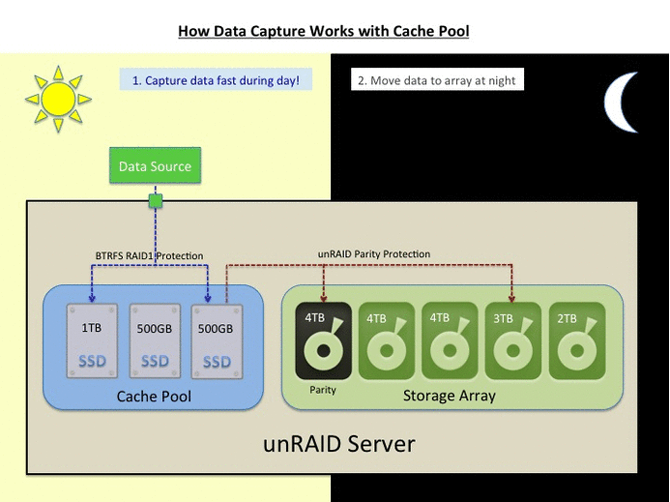
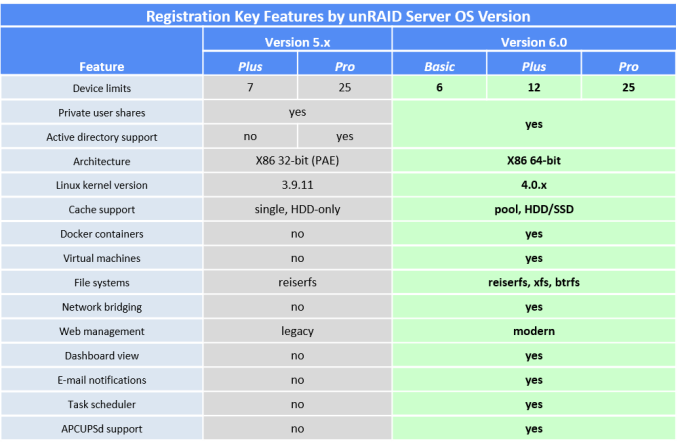
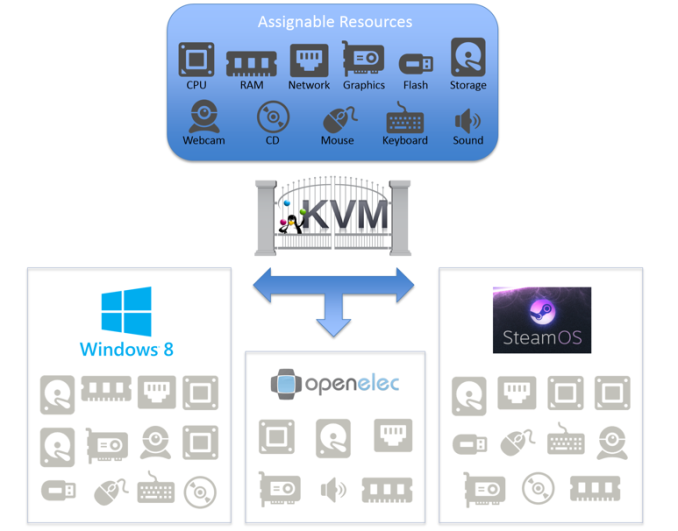

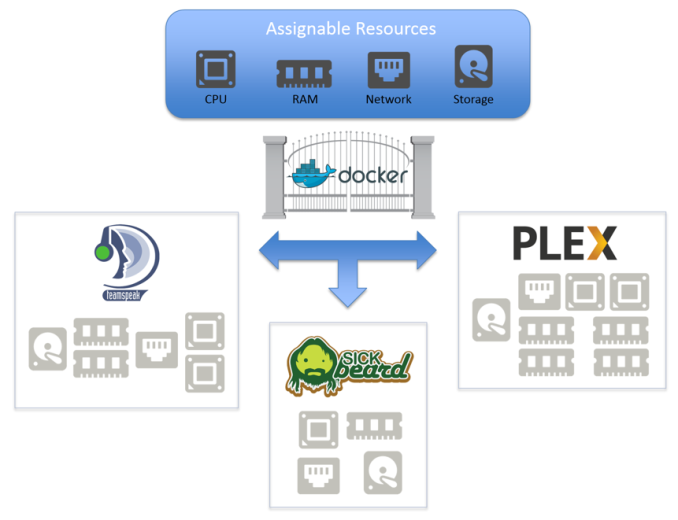
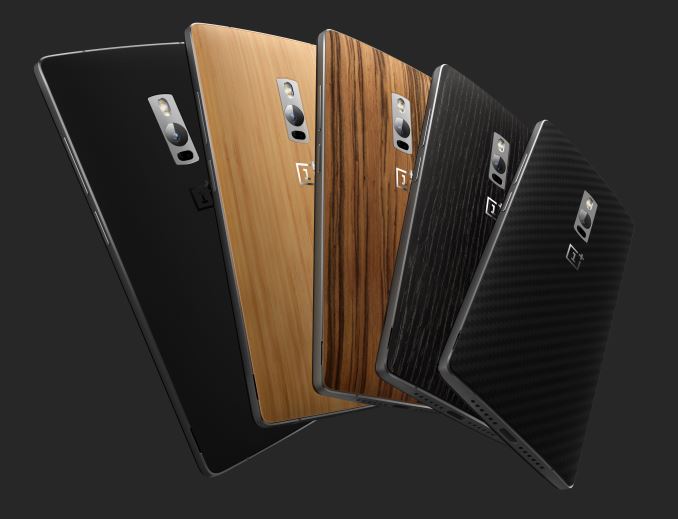

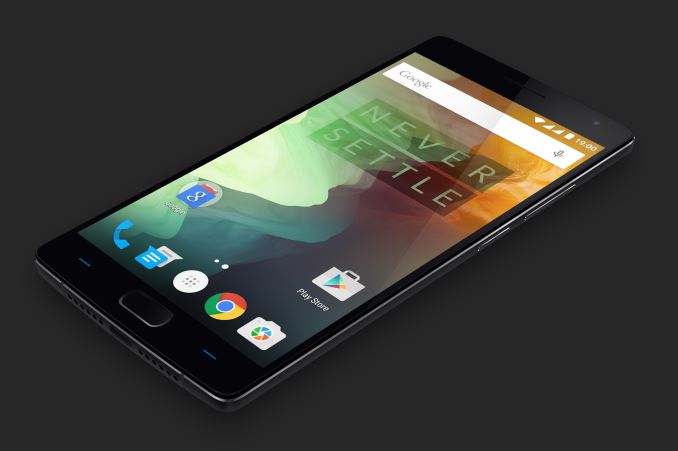
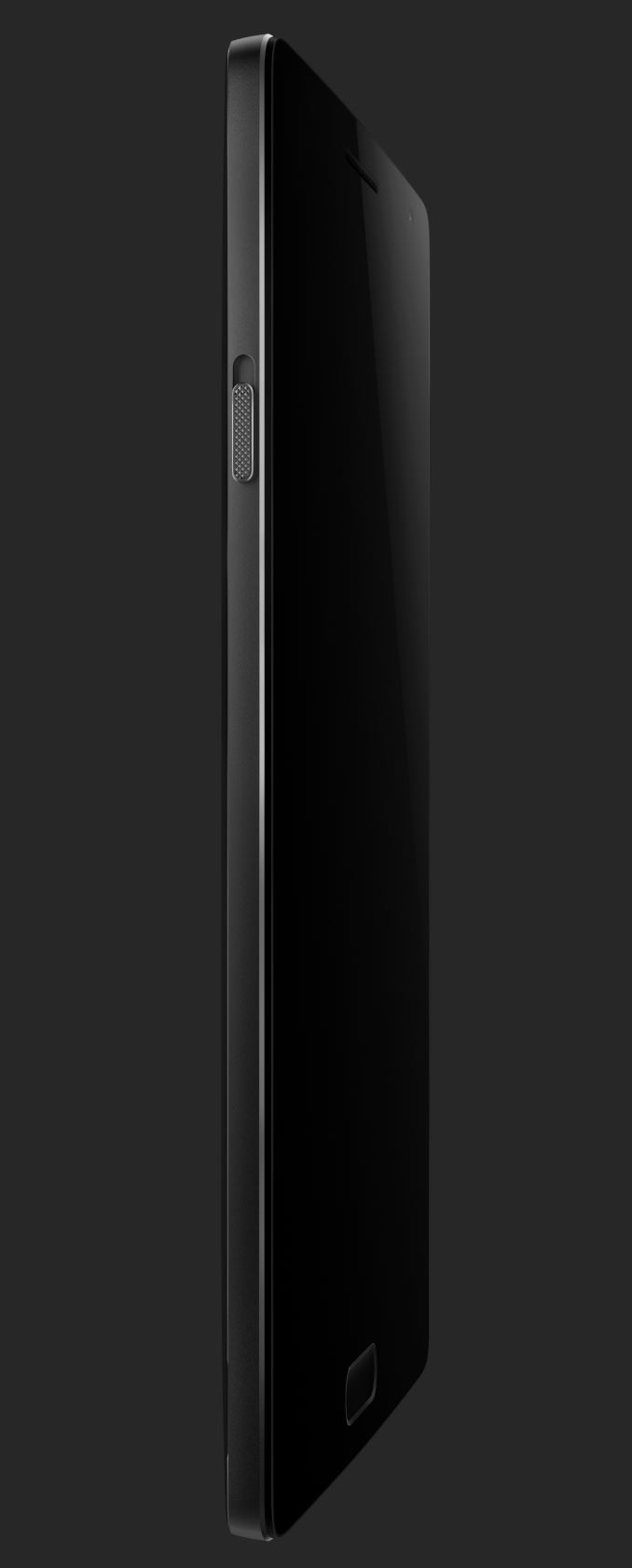
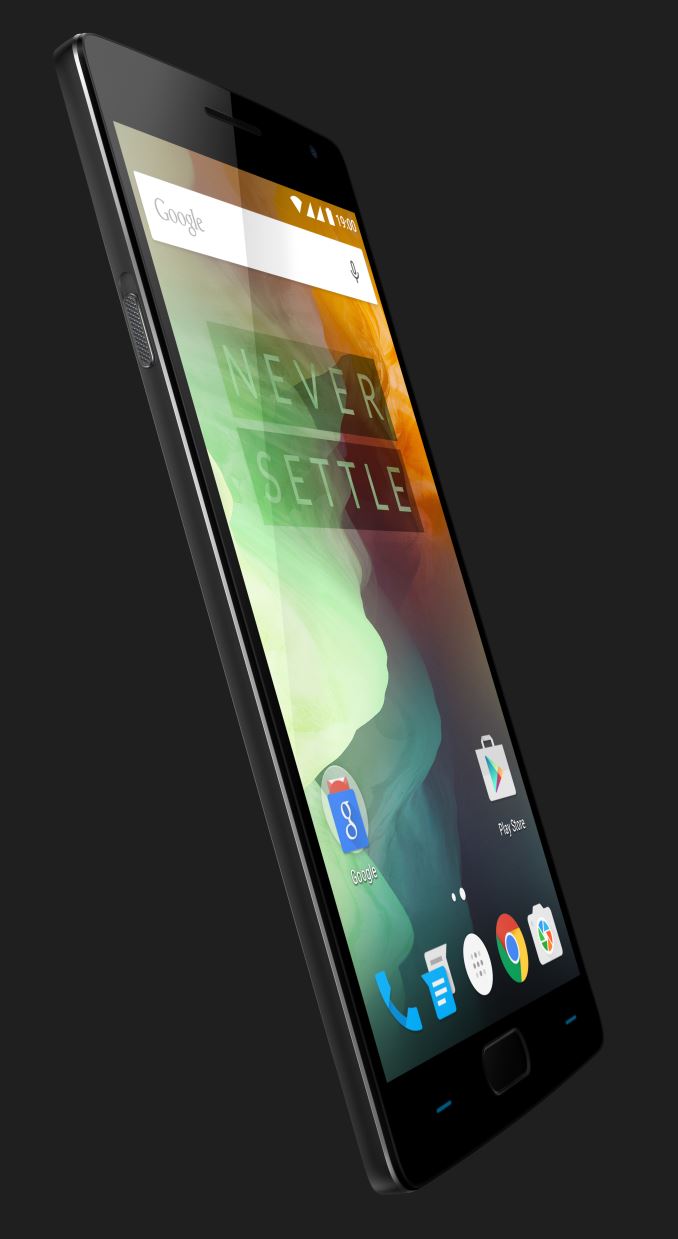
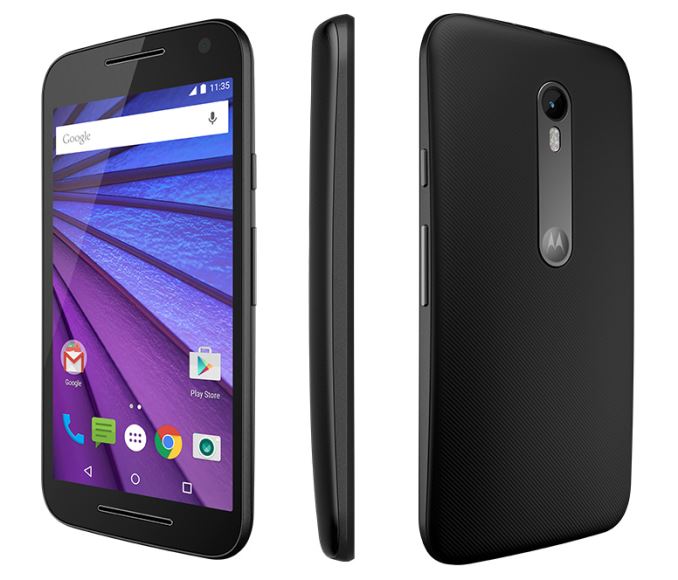
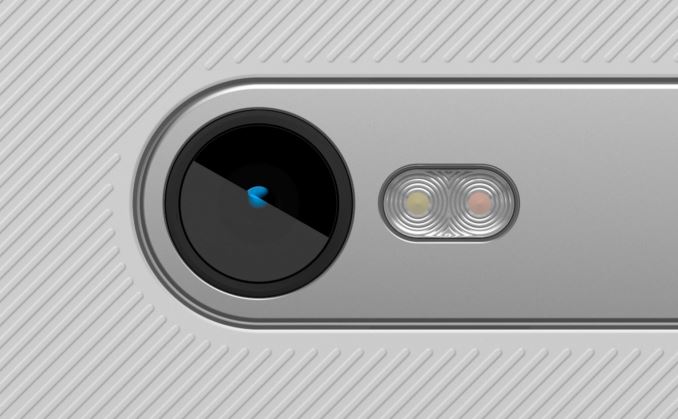

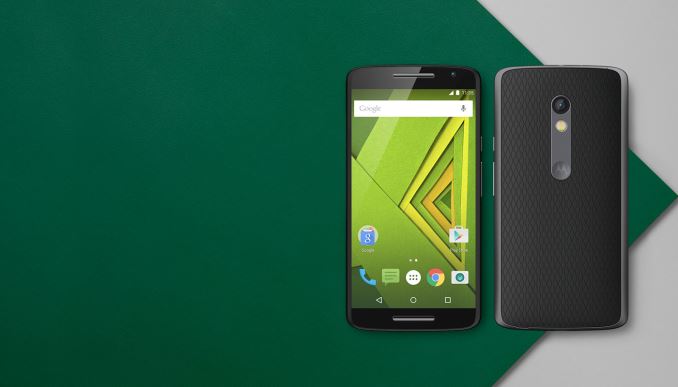

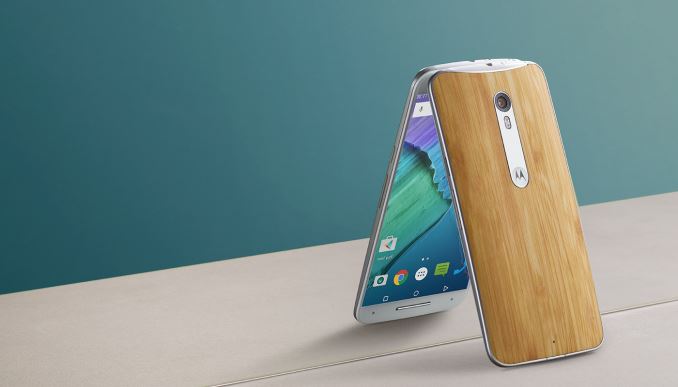

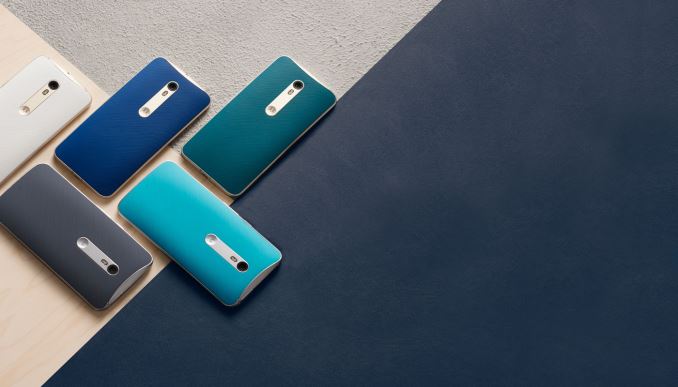
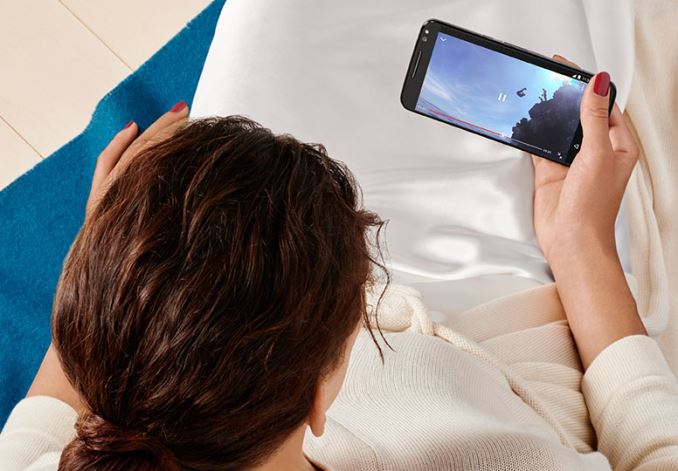
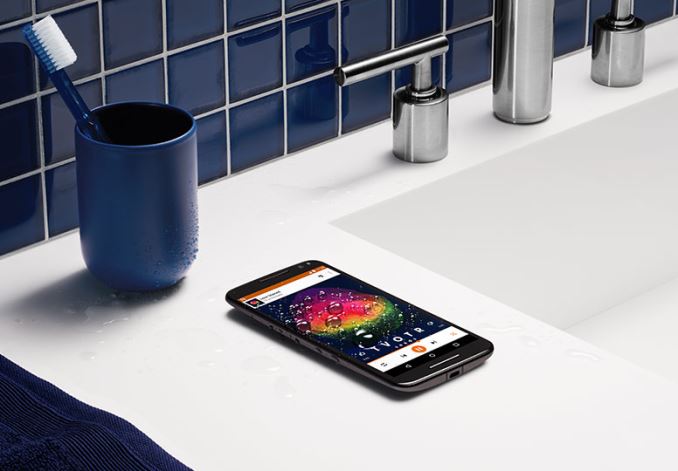

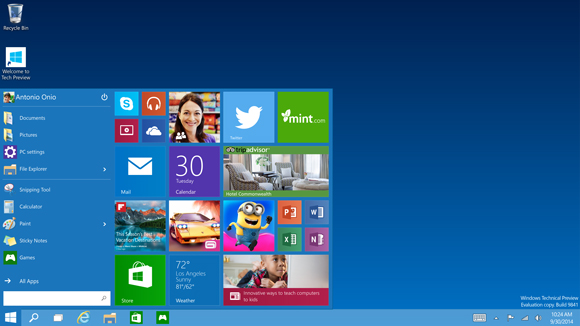
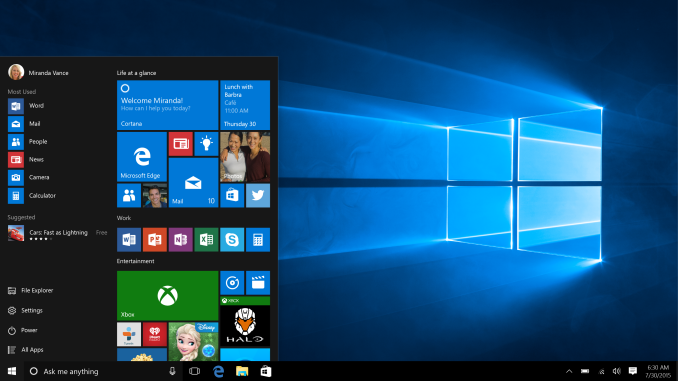
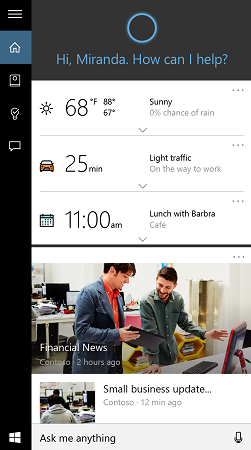

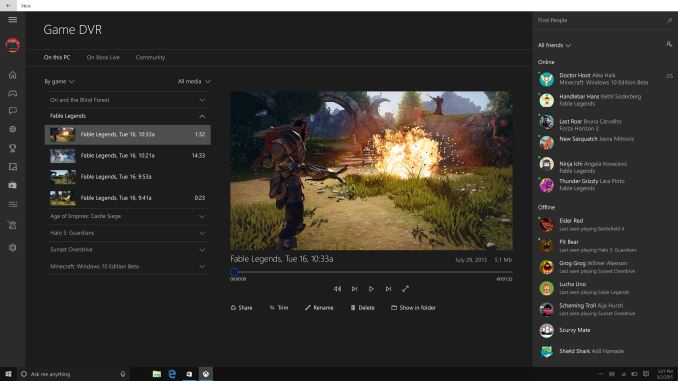


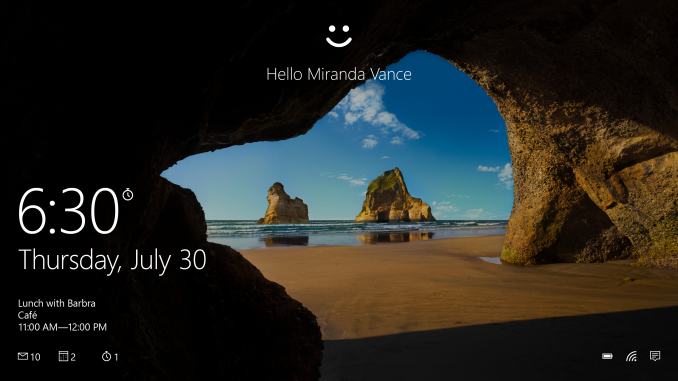
















Bookmarks